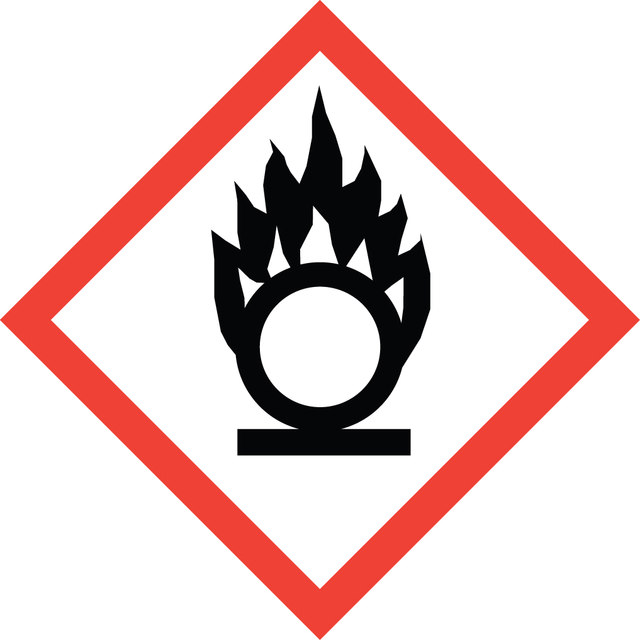Sign In to View Organizational & Contract Pricing
Select a Size
About This Item
Linear Formula:
NaNO2
CAS Number:
Molecular Weight:
69.00
EC Number:
MDL number:
UNSPSC Code:
12352302
PubChem Substance ID:
NACRES:
NA.21
Assay:
≥99.0%
Form:
powder or crystals
Quality Level
product line
ReagentPlus®
Assay
≥99.0%
form
powder or crystals
autoignition temp.
914 °F
pH
9 (20 °C, 100 g/L)
mp
271 °C (lit.)
SMILES string
[Na+].[O-]N=O
InChI
1S/HNO2.Na/c2-1-3;/h(H,2,3);/q;+1/p-1
InChI key
LPXPTNMVRIOKMN-UHFFFAOYSA-M
Looking for similar products? Visit Product Comparison Guide
Related Categories
General description
Sodium nitrite is an air-sensitive and hygroscopic solid with both reducing and oxidizing properties. It is commonly used as a reagent and catalyst in synthetic organic chemistry. It is decomposed by acids (even weak acids) with the evolution of a brown mixture of nitrogen oxides (NOx).
Application
Sodium nitrite can be used as a reagent in:
It can also be used as a nitrating agent in organic synthesis.
It is used in direct C-H nitration, ipso-nitration, and nitration via transition metal-catalyzed cross-coupling reaction. NaNO2 is also used as a co-catalyst for catalytic oxidation of alcohols under aerobic, solvent-free conditions.
- In the conversion of amines into diazo compounds, which are used as key precursors to many dyes, such as diazo dyes.
- Nef reaction and Abidi transformations.
- The C–C bond cleavage reaction in the presence of TFA under aerobic conditions.
- The oxidative carbonitration of alkenes in the presence of K2S2O8.
It can also be used as a nitrating agent in organic synthesis.
It is used in direct C-H nitration, ipso-nitration, and nitration via transition metal-catalyzed cross-coupling reaction. NaNO2 is also used as a co-catalyst for catalytic oxidation of alcohols under aerobic, solvent-free conditions.
Legal Information
ReagentPlus is a registered trademark of Merck KGaA, Darmstadt, Germany
Signal Word
Danger
Hazard Statements
Precautionary Statements
Hazard Classifications
Acute Tox. 3 Oral - Aquatic Acute 1 - Eye Irrit. 2 - Ox. Sol. 3
Storage Class Code
5.1B - Oxidizing hazardous materials
WGK
WGK 3
Flash Point(F)
Not applicable
Flash Point(C)
Not applicable
Regulatory Information
危险化学品
This item has
Choose from one of the most recent versions:
Already Own This Product?
Find documentation for the products that you have recently purchased in the Document Library.
Raquel Morais de Paiva Daibert et al.
PloS one, 15(11), e0241861-e0241861 (2020-11-07)
Macrophages are classified upon activation as classical activated M1 and M2 anti-inflammatory regulatory populations. This macrophage polarization is well characterized in humans and mice, but M1/M2 profile in cattle has been far less explored. Bos primigenius taurus (taurine) and Bos
Anne C Rios et al.
Cancer cell, 35(4), 618-632 (2019-04-02)
Breast tumors are inherently heterogeneous, but the evolving cellular organization through neoplastic progression is poorly understood. Here we report a rapid, large-scale single-cell resolution 3D imaging protocol based on a one-step clearing agent that allows visualization of normal tissue architecture
Paul J Shami et al.
Journal of medicinal chemistry, 49(14), 4356-4366 (2006-07-11)
The literature provides evidence that metabolic nitric oxide (NO) release mediates the cytotoxic activities (against human leukemia and prostate cancer xenografts in mice) of JS-K, a compound of structure R(2)N-N(O)=NO-Ar for which R(2)N is 4-(ethoxycarbonyl)piperazin-1-yl and Ar is 2,4-dinitrophenyl. Here
Lucas C Pinheiro et al.
Free radical biology & medicine, 53(4), 701-709 (2012-06-23)
The new pathway nitrate-nitrite-nitric oxide (NO) has emerged as a physiological alternative to the classical enzymatic pathway for NO formation from l-arginine. Nitrate is converted to nitrite by commensal bacteria in the oral cavity and the nitrite formed is then
Rustem F Dautov et al.
Nitric oxide : biology and chemistry, 40, 36-44 (2014-05-27)
Previous studies in non-human blood vessels and in platelets have demonstrated that under hypoxic conditions release of NO from nitrite (NO2(-)) is potentiated by deoxyhaemoglobin. In the current study, we characterized hypoxic potentiation of NO2(-) effects in human vasculature and
Our team of scientists has experience in all areas of research including Life Science, Material Science, Chemical Synthesis, Chromatography, Analytical and many others.
Contact Technical Service

